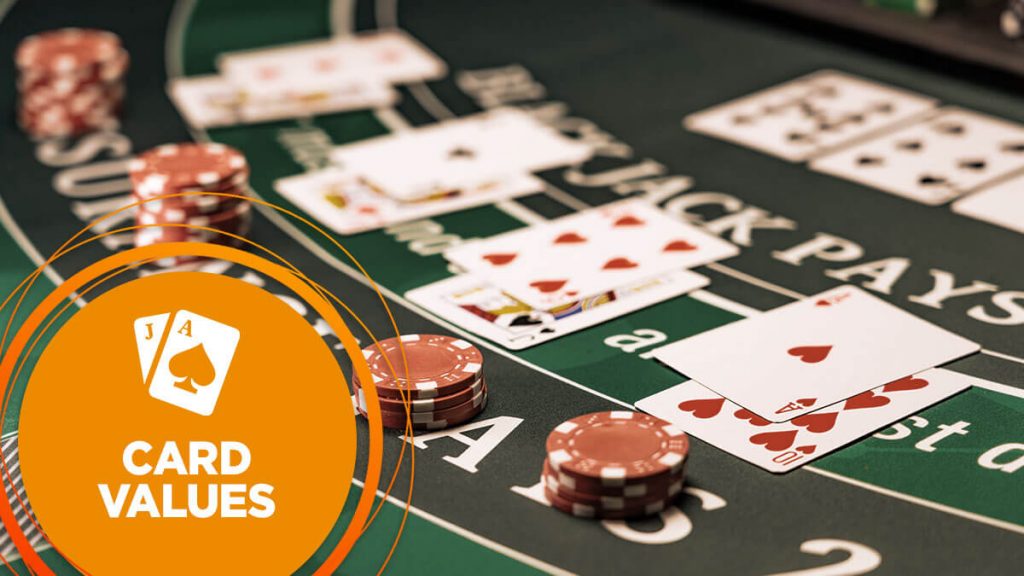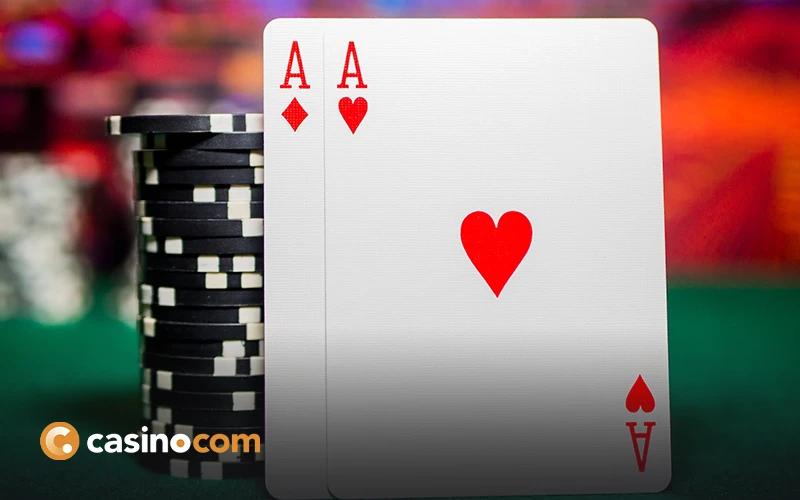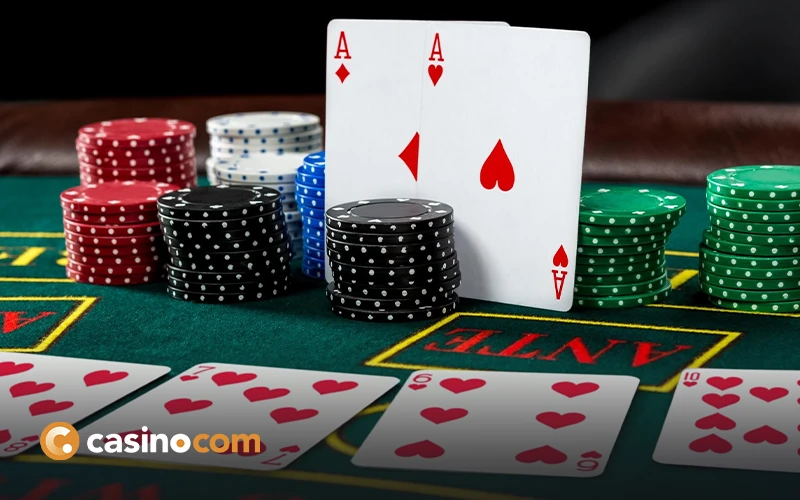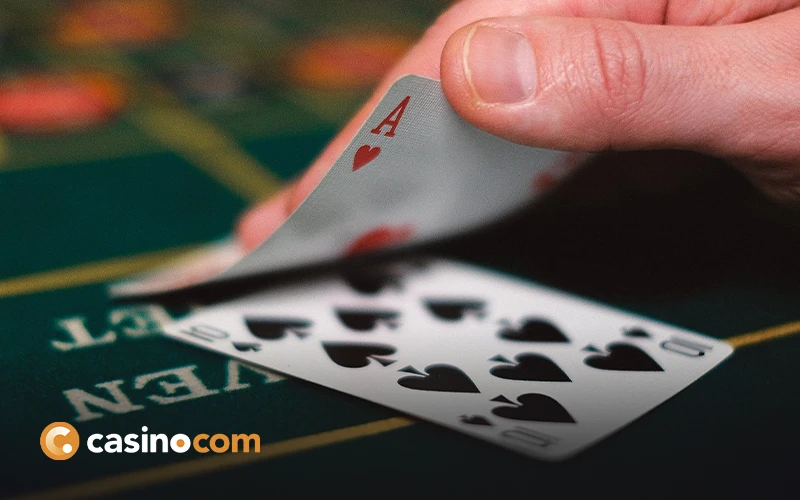For casual players, blackjack might appear as one of the simpler casino games out there. In reality, there’s a lot for a player to understand at a glance so they can maximize their odds. In chapter four of our online blackjack guide, we’ll go over the different starting hands in blackjack and what they mean for you. We will review the best starting hand in blackjack and go through to the worst starting hand; here’s what you need to know.
Blackjack Hand Values
Calculating blackjack hand values is central to getting the most out of the game, but it’s an easy process to learn so don’t stress. To start with, players need to consider each card and become familiar with how the different cards are scored – most are intuitive, but some are not.
Blackjack card values for the numbered cards are simply what the number says. For example, a number three card has a score of three, while a number nine card offers a score of nine. Since the numbered cards in a regular deck are all within the 2-10 range, and there are four suits, this means there are 36 numbered cards in a deck.
Now consider the face cards. These are the jack, queen, and king. Each of these offers a value of ten. With four sets of three cards in this range, there is a total of 12 face cards in each deck.
Finally, we have the ace. The ace in blackjack is unlike any other card because it has two possible values. These are either 1 or 11. In most situations, the player gets to choose whether an ace in their hand counts as 1 or 11. Aces are important in Soft Hand totals which will be covered shortly. There are four aces in any deck.
Blackjack Card Values pic.twitter.com/WaR0MozONd
— Thaiblackjack (@thaiblackjack21) July 30, 2023
It should be noted that suits in blackjack do not affect a hand’s total value.
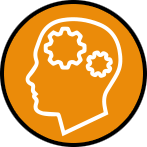
Player’s Hand
The objective for the player in blackjack is to beat the dealer. This can occur in a few ways. One way can occur when the player reaches the target score of 21, either by drawing to a 21 or getting a natural which consists of an Ace and a 10 value card. This is also called a blackjack. Another way is by the dealer going over 21. This is called a bust, but this can be done by both the dealer and the player. When the player does this they automatically lose.
Scoring 21 is possible through the right combination of card scores. As stated, this can be accomplished with the first two cards each player is given. It’s not possible to go over 21 with these two cards, but players can hit the score exactly with an ace and a card valued at ten. This could be an ace and a face card, or an ace and a ten. In either scenario, the combination is the best hand in blackjack.
If they don’t get a blackjack with the first two cards, the player finds themselves pitted against the dealer. In this situation, both are playing to get closest to 21. Here the player can keep requesting additional cards to reach their target. The process of getting another card is called hitting.
Each new card adds to the total score, so players have to weigh getting closer to 21 against going over 21 and busting. If they don’t wish for another card, the player can stand, and not take any additional cards.
The worst hand in blackjack that a player can be dealt is a total score of 16. In this scenario, there is a strong chance of the player busting if they hit.
Splits
Splits are possible when two initial cards have the same value. A split then separates these cards into two hands, while requiring an additional bet from the player. While more expensive, a split offers better odds than a pair of eights.
Insurance
In blackjack, unless you are dealt blackjack, you are susceptible to the dealer getting blackjack themselves. This is where the insurance play comes into the equation.
If the dealer shows an ace as their face-up card, insurance is offered. The player can make a side bet equal to half of the original wager that the dealer’s down card is a face card (Jack, Queen, King) or 10.
Should the dealer have blackjack, the player wins on their insurance bet. If the dealer does not have blackjack, that wager is lost and the hand continues as normal.
Though it is far from a sure thing, statistically the odds are very much in favor of the dealer having blackjack when showing an ace to begin.
Doubling Down
When a player has been dealt their original two cards, there is an opportunity to double the bet made before the dealer issues another card.
While the bet itself will simply double, it is important to keep one thing in mind. When doubling down, the player only gets one more card from the dealer before all bets are settled.
Be aware of the rules some variants of blackjack will only let you double down with a value ranging between 9 and 11. Other variants allow for doubling down on any total.
Learning how and when to double down is part of the strategy of the game. Doubling down can depend on how many decks are being used, what the dealer is showing, and what you, the player, is showing. There are also cheat sheets out there to help.
Simple Rules of Blackjack
While nearly all the focus of the game itself is on getting as close to 21 without busting to beat the dealer, there are a few minor rules to be aware of.
Depending on where you play, verbal signals may or may not be allowed when making decisions. In some instances, players may be required to use hand signals to indicate whether they Hit or Stand.
Though players have an etiquette amongst themselves, the casino also prohibits influencing or instructing other players on how to play. While you may be of a certain opinion that a player should act in a particular way, they are free to make their own decisions accordingly.
The beauty of blackjack is that it is simple and straight to the point. Even the most novice of players can sit down at a blackjack table and have a decent understanding of the rules and create their own strategy or adhere to a popularized one.
Dealer Hands and Edge
When a round of blackjack begins, each player is given two cards. Depending on the type of blackjack being played, the dealer receives one face-up and one face-down card, or just one face-up card. This gives the player some indication of what the dealer’s total might be.
After the players make their playing decisions, it’s the dealer’s turn. The dealer reveals their face-down card if they have one and then plays by a predetermined set of rules. The blackjack dealer rules require them to hit until they score at least 17 and then stand. The player can win here either by having a higher score than the dealer, or if the dealer busts.
Any aces the dealer possesses automatically count as scoring 11 if this brings the dealer’s score over 17.
According to probability analysis, the dealer edge in blackjack can range from 0.25% to around 2%, depending on the rules in play. This means that, on average, a perfect player could expect to have $98 left after putting a $100 in action. Of course, the unpredictable nature of the game means that a player could also come out far ahead with a run of good blackjack hands. They could also lose far more if luck isn’t on the player’s side.

Soft Hands
The term soft hand in blackjack refers to a situation when an ace in a player’s hand can be counted as 11 points or 1. As an example, the following combinations would be considered soft hands:
-
An ace and a four
-
An ace, a four, and a three
-
An ace and a nine
Soft hands are considered advantageous to the player because they offer flexibility and a certainty that the next hit will not result in a bust. This doesn’t mean that players should always hit, however. In the example of an ace and a nine, the player score would be 20, which shouldn’t be hit on.
As for what a player should do when they have a soft hand, this is up to the player’s personal strategy. We’ll cover optimal strategy in the next chapter of this blackjack guide. A player should use a basic blackjack strategy chart to determine their next move for the best long term outcome.
Hard Hands
Hard hands have no varying Ace value in them. In other words, a hard hand occurs when a player either has an Ace that must act as a single point value because it would otherwise cause the player to bust, or no Ace at all in the hand. The following situations are all examples of hard hands:
-
An ace, a five, and an eight
-
An ace, a three, and a jack
-
An ace, a five, and a six
-
A seven, a ten, and an ace
-
A ten and a 7
In the above instances, the first three of these hands started as soft and then became hard hands when the player crossed the ten-point threshold. Once past ten, any ace worth eleven points would have caused a bust, so it must instead be counted as a card value of one.
Final Thoughts
Keeping this information in mind, players now know enough to start working with and memorizing the common blackjack card values, and understanding what they mean. This framework serves as the foundation to basic blackjack strategy, which is the foundation of advantage blackjack play. Basic Strategy will be covered in depth in the next chapter.
FAQ
All cards are worth their face value, except for the King, Queen, and Jack, which each count as 10. An Ace is worth 11 unless it would cause the player or dealer to go over 21; in that case, it counts as 1.
In the standard blackjack card counting method, cards are valued as follows:
- 2, 3, 4, 5, 6: +1 each
- 7, 8, 9: 0 each
- 10, Jack, Queen, King, Ace: -1 each
The dealer and each player begin with two cards. The dealer’s first card is face up, and the second is face down. Face cards are worth 10, Aces are worth either 1 or 11, and all other cards are worth their face value. If an Ace is paired with a 10, Jack, Queen, or King, it’s a “Blackjack.”
The 13 values of cards (Ace through King) match the 13 lunar cycles in a year. A full deck of 52 cards (without jokers) corresponds to the 52 weeks in a year. The total value of all 52 cards (Ace = 1, King = 13, Queen = 12, Jack = 11) plus 1 Joker adds up to 365, which is the number of days in a year.
Number cards are worth their face value, while the jack, queen, and king (called “face cards”) are each worth 10. Aces can be worth either 1 or 11, depending on what the player chooses.
Did you know that an ace had the same value in 16th century Spain as in modern blackjack? Legendary author Miguel de Cervantes explained the rules of veintiuna (21) in his book titled Rinconete y Cortadillo. He said that the objective was to get to 21, with the ace counting as either 1 or 11. The picture cards have a value of 10 and the rest are determined by their number.

Previous: Blackjack Etiquette
Next: Blackjack Strategy

